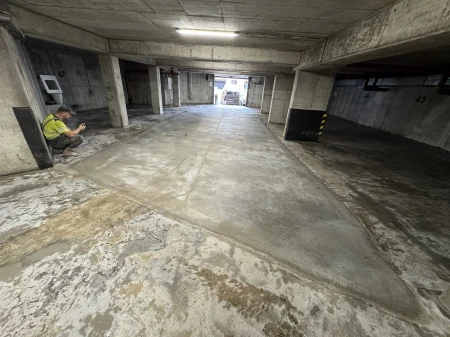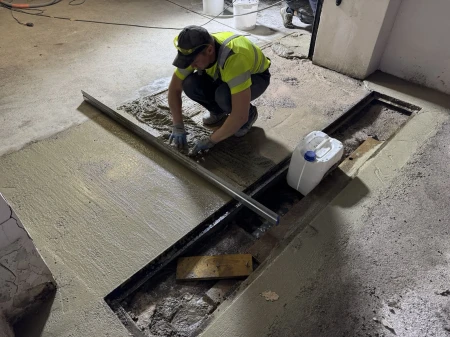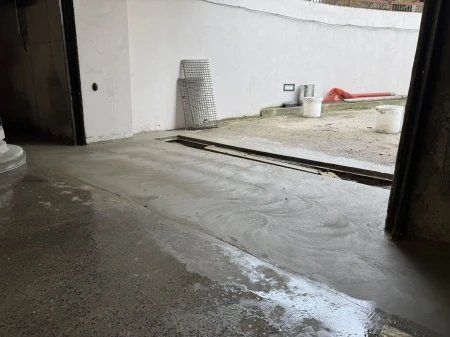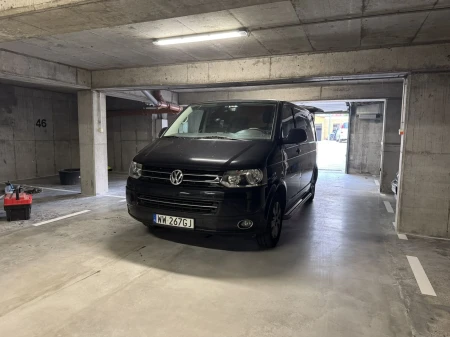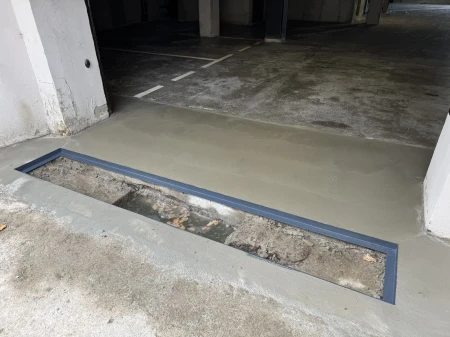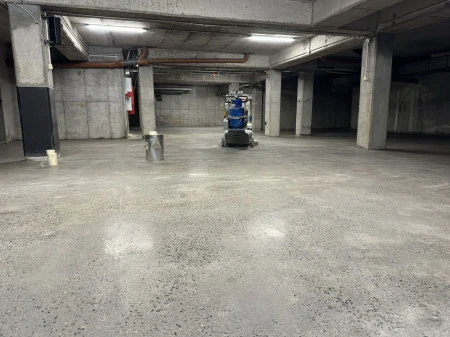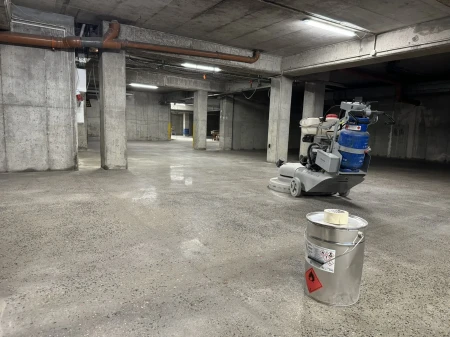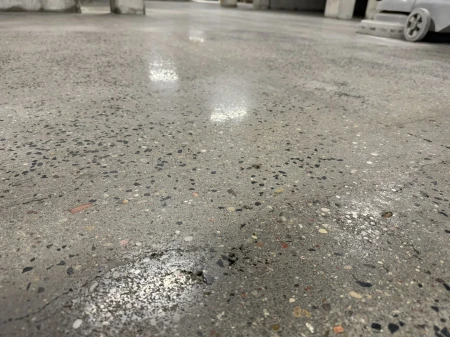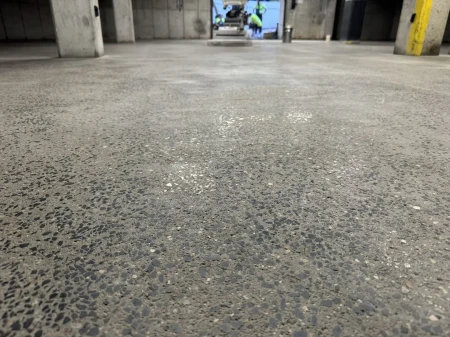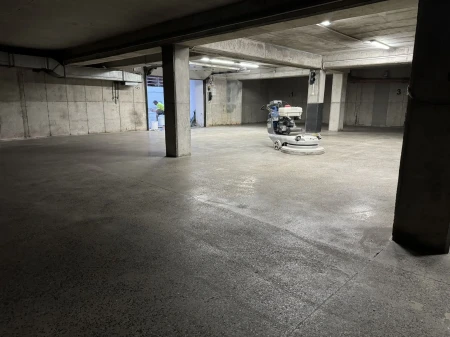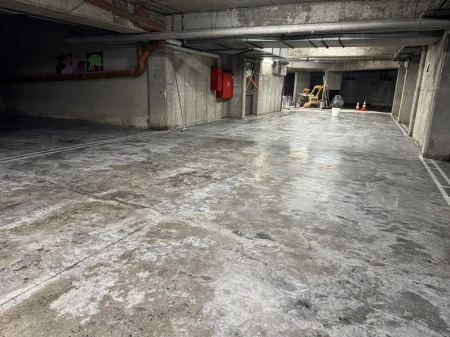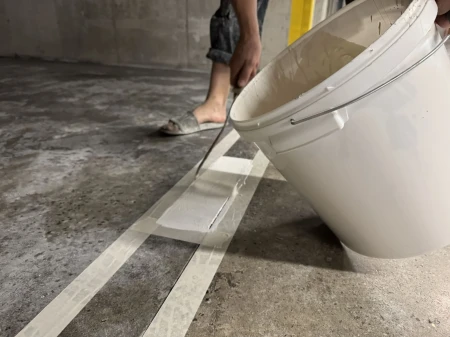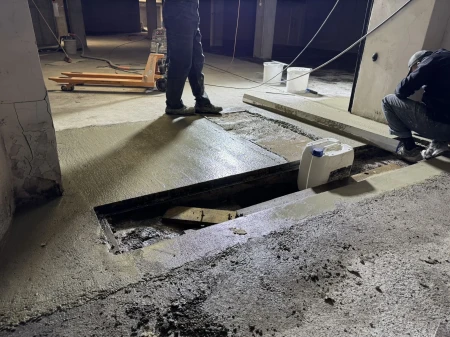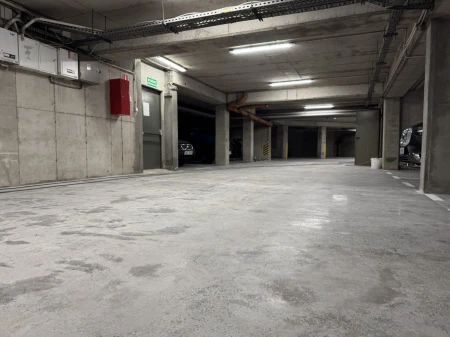What did we do on this construction site:
- milling;
- grinding;
- spackling;
- impregnation;
- polishing.
What are the methods for repairing an old concrete floor?
Repairing an old concrete floor is a task that can restore its former glory and functionality. Concrete is a very durable material, but over the years and under the influence of external factors, it can be damaged. Scratches, cracks, and gaps are common problems, but they can be dealt with thanks to several repair methods.
The easiest way to repair flooring small cracks is to use specialist cement mortars or epoxy binders. First, thoroughly clean the damaged areas of dust and loose concrete fragments, then fill them with an appropriate repair mass. Epoxy binders are ideal for smaller cracks because they are flexible and adhere perfectly to the surface.
When the concrete floor is uneven, it is worth considering the use of self-leveling screeds. These are special masses that are spread on the floor surface, and their liquid consistency allows for a smooth and even surface. After hardening, the screed provides a stable and even base, ideal for further finishes, such as tiles, panels or carpets.
In cases where industrial flooring is dull or covered with stains, a good solution is to grind and polish it. This process involves mechanically removing the top layer of concrete using specialized machines, followed by polishing, which restores the shine and aesthetic appearance of the floor. Additionally, appropriate impregnants can protect the surface from future damage.
An alternative to sanding can be the application of new repair coatings to the floor. Epoxy or polyurethane coatings not only mask imperfections, but also increase the resistance of the floor to chemical and mechanical factors. They are available in a variety of colors and finishes, allowing you to personalize the look of your floor.
In the case of larger damages, such as large cracks or voids, it may be necessary to use thin-layer commercial cement floors with high strength. This process requires the removal of damaged material, preparation of an appropriate repair mixture and its careful application. This often involves the need for additional reinforcement, especially if the damage is deep and structural.
When the problem is sunken polished concrete, one of the modern and effective methods is geopolymer injection. This technique involves injecting a special material under the floor, which, when expanded, lifts and stabilizes the concrete.
Choosing the right method of floor repair depends on the type and extent of damage and the planned further use of the floor. It is important to thoroughly assess the condition and needs of the floor before starting work. It is often worth consulting professionals who will help you choose the most effective solutions, ensuring the durability and aesthetics of the repaired floor.

How can you repair deep holes in a concrete floor?
Repairing deep holes in concrete floors is essential not only for aesthetics, but above all for user safety and the durability of the structure. Deep holes can lead to further damage, impede movement and pose a health hazard.
Before you begin flooring repair, it is important to thoroughly assess the extent and cause of the damage. Sometimes, holes in concrete can be the result of structural issues, such as subfloor, drainage, or loading problems. In such cases, it is a good idea to consult a structural engineer.
Before applying any repair material, it is important to thoroughly clean the area. Any loose resin flooring, concrete, dirt, dust and other contaminants should be removed. Using a wire brush or pressure washer can make this task much easier. The gaps should be thoroughly cleaned of any remnants of old concrete, which will ensure better adhesion of the new repair.
If the edges of the pit are unstable, it is worth reinforcing them to prevent further cracking. This can be done by cutting with a concrete saw, which will provide clean and stable edges.
The choice of repair material is crucial to the durability of the floor repair. Specialist high-strength, self-leveling concrete mortars are recommended for repairing deep holes. For larger and deeper holes, it is worth considering using quick-setting mortars, which allow for a shorter repair time and the floor to be restored to usable condition in a shorter time.
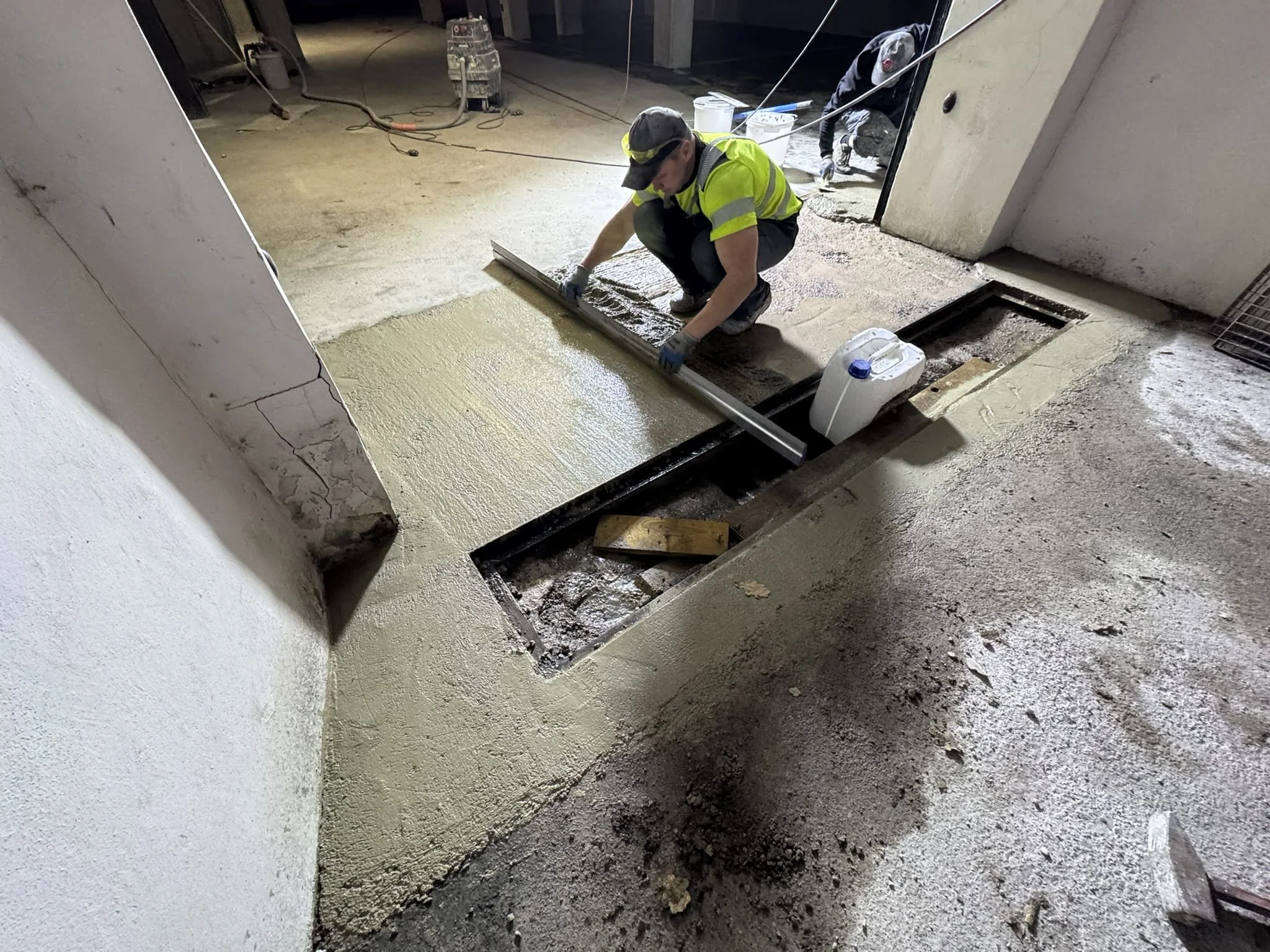
In deeper holes, additional reinforcement is sometimes necessary to ensure the repaired floor surface is strong enough. This can include fiberglass mats or steel rods to add structural strength to the repair.
After preparing the place and materials, we begin repairing the concrete floor. The repair material should be poured into the prepared hole, making sure that it fills all the spaces well. It is also important to thoroughly smooth the surface so that it is even with the rest of the floor.
After applying the mortar, it is important to compact the surface and remove any air bubbles. Then, leave it to harden according to the material manufacturer's instructions. If there is a need to use a concrete pump, you can contact us.
After the repaired floor surface has hardened, additional finishing work can be carried out, such as polishing or additional reinforcement with a protective coating. Especially in places exposed to high mechanical and chemical loads, it is worth using protective coatings that will increase the resistance of the floor. To ensure safety, do not forget to use safety barriers.
Applying the above steps will allow for effective and permanent repair of deep holes in the concrete floor, restoring its functionality and utility properties. It is worth remembering, however, that a professional approach and accuracy of the work performed are the key to success in concrete repair.

Work results:
- milling - 100 m2;
- grinding - 1500 m2;
- spackling - 1500 m2;
- impregnation - 1500 m2;
- polishing - 1500 m2.


